Tony de los Reyes specializes in suppressed landscapes. When he paints women, they’re suppressed landscapes, too.
A couple of years ago he was painting in oil alkyd: creamy white grounds with blue figures. Those surfaces look shellacked but aren’t. Sometimes a bird (always blue) flies by, high overhead. Sometimes there are sheep, ships or flowers, and sometimes a tree leaning into the air from an outcropping of ground, inspired by a combination of delftware china and traditional Chinese landscape painting.
Image via: The Chase, 2004
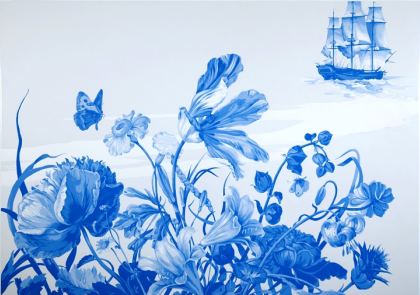 Recent paintings (and one sculpture) at Howard House could be called Fade to Black. Painted black space in ink and oil on linen overwhelms form, seeps into it and changes its character. His bright flowers are gone, replaced by the foam of a poisoned sea.
Recent paintings (and one sculpture) at Howard House could be called Fade to Black. Painted black space in ink and oil on linen overwhelms form, seeps into it and changes its character. His bright flowers are gone, replaced by the foam of a poisoned sea.
The Prophet, 2009, polyester resin, aluminum, wood.
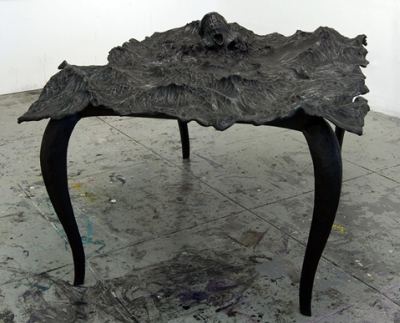 From delicacy he has moved to a bombast that resembles Robert Morris’ in the early 1980s. As Ricard Lacayo noted in 1984:
From delicacy he has moved to a bombast that resembles Robert Morris’ in the early 1980s. As Ricard Lacayo noted in 1984:
Two years ago, Robert Morris began showing a series of bas-relief
works that seemed to vent nuclear anxieties in a visual language of
medieval fatalism. Embedded in an infernal slurry of plaster, human
faces and fractured skeletons held the poses of apocalyptic death
agony. This year Morris returned to painting with a series of more
ambiguous abstractions. But a skeletal frieze has been retained along
the frame to specify the note of mortal dread.
Morris charted Dante’s Inferno. De Los Reyes is filtering Herman Melville through a lens of contemporary environmental degradation and economic collapse. De los Reyes’ paintings suggest the seeds of our ruin were there all along, in the chaos of our hearts. (William Carlos Williams: “The pure products of America go crazy.”)
1851:
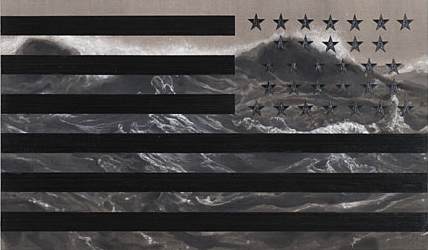 As with Morris, the bombast has a built-in problem. If it fails to overwhelm, it becomes its own parody. What de los Reyes has given up to get here is his subtlety, insouciance and tough-minded allure.
As with Morris, the bombast has a built-in problem. If it fails to overwhelm, it becomes its own parody. What de los Reyes has given up to get here is his subtlety, insouciance and tough-minded allure.
Also like Morris, what saves him are high craft values. His chaos is well made, which gives it focus and depth. After the white whale breeches and dives in 1851, the pool that churns in its wake under the stars in a backwards flag is a lizard’s eye.
Melville’s sea drove a boy stranded in it out of his mind. About rivers, however, Melville was more optimistic. From The Confidence Man:
Here reigned the dashing and all-fusing spirit of the West, whose type is the Mississippi itself, which, uniting the streams of the most distant and opposite zones, pours them along, helter-skelter, in one cosmopolitan and confident tide.
I miss in de los Reyes what he used to have in abundance, a sense of that cosmopolitan and confident tide.



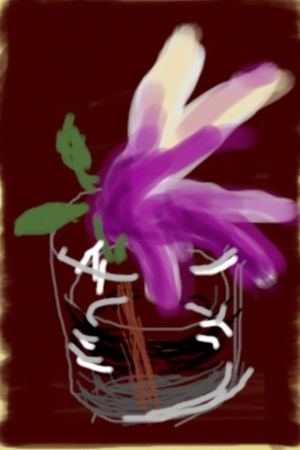
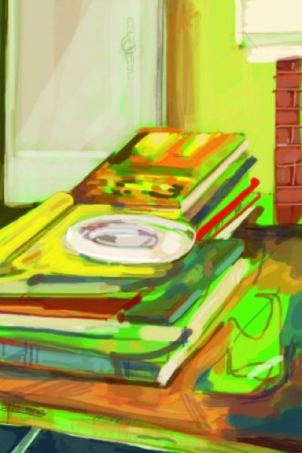
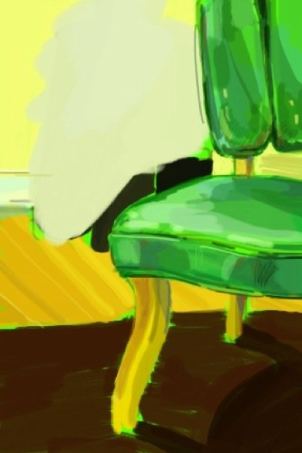
 And others like it wouldn’t be.
And others like it wouldn’t be. More
More 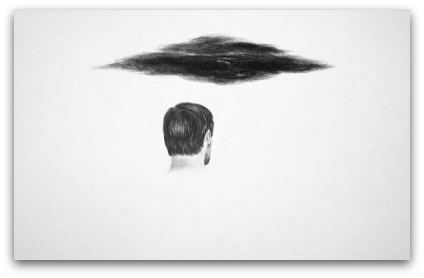
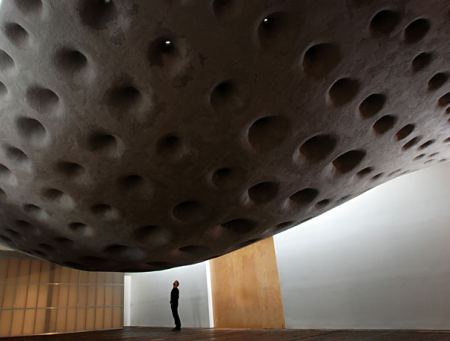
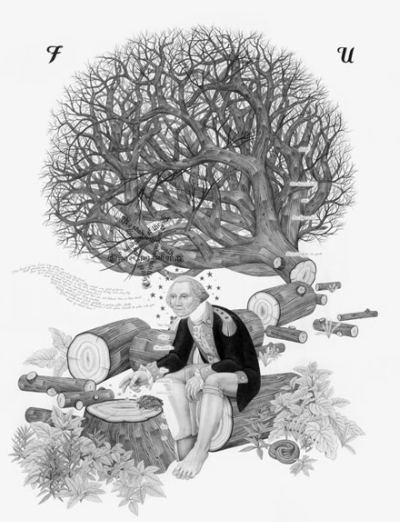 Beltz gave the father of our country lovely feet. If he could stand, they could carry him out of this scene of morbid self-reflection. Instead, he sits on a log from his cherry tree with stars from the original 13 colonies ringing his face like mosquitoes, and his head detached from his body as if ready to be reproduced on dollar bills. The tree itself flourishes behind him as a rootless cosmopolitan, an entangling alliance.
Beltz gave the father of our country lovely feet. If he could stand, they could carry him out of this scene of morbid self-reflection. Instead, he sits on a log from his cherry tree with stars from the original 13 colonies ringing his face like mosquitoes, and his head detached from his body as if ready to be reproduced on dollar bills. The tree itself flourishes behind him as a rootless cosmopolitan, an entangling alliance.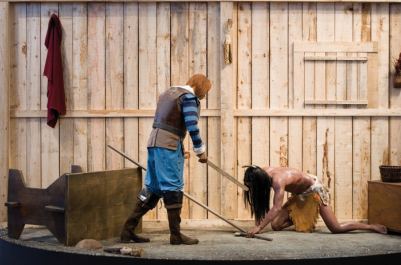
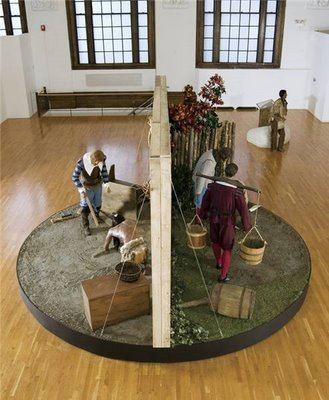 Durant purchased the dioramas from the defunct Plymouth National Wax Museum in Massachusetts. Initially, the museum displayed the accurate version of Thanksgiving’s origins: After Pequot Indian Pecksuot insulted Captain Myles Standish, Standish flew into a rage and killed him. Fearing retribution from Pecksuot’s tribe, Standish organized a raiding party and wiped out the Indians camped nearby. Afterward, settlers celebrated their win by declaring a national day of thanksgiving.
Durant purchased the dioramas from the defunct Plymouth National Wax Museum in Massachusetts. Initially, the museum displayed the accurate version of Thanksgiving’s origins: After Pequot Indian Pecksuot insulted Captain Myles Standish, Standish flew into a rage and killed him. Fearing retribution from Pecksuot’s tribe, Standish organized a raiding party and wiped out the Indians camped nearby. Afterward, settlers celebrated their win by declaring a national day of thanksgiving. 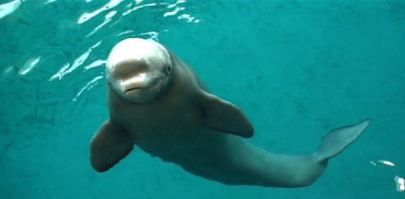 Rewick describes her survey as
Rewick describes her survey as